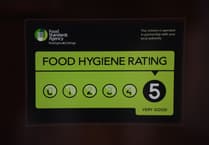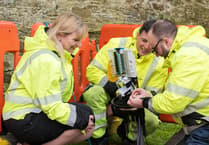A programme of pothole repairs and road resurfacing projects for the South West, made possible by the first tranche of £800-million in reallocated HS2 funding for the region, has been revealed - with the first set of roads already resurfaced to make journeys safer, faster and smoother.
Last November, the government announced an unprecedented £8.3-billion investment to tackle badly surfaced roads and pothole ridden streets across England, with the South West receiving £800-million over an 11 year period.
Councils in the South West have already been paid more than £25-million on with the work and deliver improvements, with another £25-million following in this financial year. As a condition of this funding, and to make sure money is being spent on pothole repairs, local authorities are required to publish a two year plan detailing exactly which local roads will benefit.
The Department for Transport has revealed the local authorities in the South West which have responded to the department’s survey request to set out their plans, meaning local people can now check their local council’s websites and scrutinise their plans for themselves.
An initiative intending to bring increased transparency to how local councils deliver taxpayer-funded improvements, residents in the South West can now immediately see the benefits to their area made possible by reallocated HS2 funding, and hold their local authority to account for delivering local road improvements.
The Department has already been clear with those local authorities that have failed to publish reports that they could see the withdrawal of future funding to resurface roads.
From Truro to Tewkesbury, people across the South West are encouraged to check their authority websites and see which roads are planned to be improved, and routes where work has already taken place, such as the A417 at Gloucester and the A39 at Bude.
The £8.3-billion roads resurfacing fund demonstrates a commitment to improve local transport across the country and is the largest ever funding boost for local road improvements, made possible by reallocated HS2 funding.
All of the £19.8-billion saved from the Northern leg of HS2 will be reinvested in transport across the North, all of the £9.6-billion saved from the Midlands leg will be reinvested in transport across the Midlands, with the £6.5-billion saved through the new approach at Euston being spread across every other region in the country. Projects and improvements in the South and East of England are made possible by savings from Euston.
Transport secretary Mark Harper said: “We’re on the side of drivers, which is why this government is getting on with delivering our plan to invest £800-million in the South West as part of the biggest ever funding increase for local road improvements, made possible by reallocated HS2 funding.
“Alongside this unprecedented funding, which is already being used to improve local roads, we’re making sure residents can hold their local authority to account and see for themselves how the investment will be spent to improve local roads for years to come.”
Having submitted their first reports last month, councils in the South West will now also be required to submit quarterly reports from June, announcing work which has taken place over three months, meaning residents will now regularly be able to scrutinise the progress their local authority is doing to tackle potholes. For many councils, this may well be the first time they have reported their roads resurfacing plans in detail, so we would expect the overall quality of reporting from councils to improve over time and the Department will keep the quality of their reporting under review in the interests of taxpayers.
The government’s long-term plan to improve local road networks across the country could save motorists up to £440 on vehicles repairs and is the biggest ever uplift in funding for local road improvements.
This government is backing drivers, and alongside the unprecedented increase in road maintenance funding, it is delivering for motorists through the Plan for Drivers, ensuring traffic schemes like Low Traffic Neighbourhoods and 20mph speed limits have buy-in from local people, cutting congestion and accelerating the rollout of electric vehicle chargepoints.
RAC head of policy Simon Williams said: “It’s very encouraging to see so many local authorities quickly setting out how they’ll use the first tranche of the Government’s reallocated HS2 funding to improve their roads.
“Drivers will be pleased to see potholes fixed and roads resurfaced, especially as our research shows the poor state of local carriageways is their number-one concern. We hope councils will also use this extra money to carry out vital surface dressing work which helps prevent cracking in the cold winter months by sealing roads against water ingress. The prime time for this life-extending work is between April and September, so time is of the essence.”




